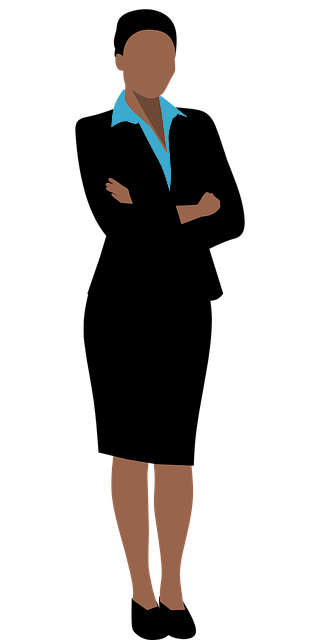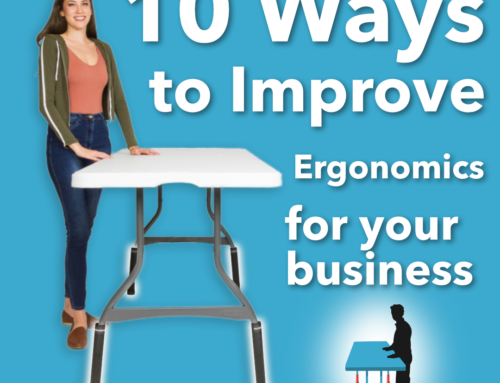If your mom ever told you to stand up straight, she was trying to help you save your back! Whether she knew it or not, good posture can actually help you stay standing tall well into old age. May is Posture Month, so we’ve got some tips and tricks on maintaining your spine for wellbeing (and let’s be frank, good looks too!)
Please note that the model in the picture above is NOT exhibiting good posture!
Standing posture
Making sure that you can stand straight while you’re working is key. You might need to lift the surface of your table so you’re not crouching or bending over to work. (Hey, what do you know, we have a solution for that if you’re at a folding table!)
While that’s important, it’s also not the only thing to consider when you’re standing.
- Books on your head
You might have seen this in old movies, but girls were encouraged to walk around balancing books on their heads. If you’re standing tall and straight, the books won’t fall.
Don’t want to walk around with books on your head? That’s OK, just imagine that your body is a vertical line. (For those of you in certain fields, imagine your body as a plumb bob.) Anything that pulls you out of that vertical line needs to be tucked back into it.
2. Suck in your gut
You don’t have to make your belly concave, but pulling your stomach back in towards your spine helps you stand taller and avoid slumping.
Plus, of course, you look better. Win-win.
3. Shoulders back
Those of us who work at computers tend to round our shoulders forward, which pulls the body out of that vertical line. Push them back so they’re on top of your body and not in front of it.
Also, many people tend to scrunch their shoulders toward their ears, especially when stressed! Pull them down away from your ears too.
4. Pay attention to your feet
Standing with your feet shoulder width apart helps you balance your weight, which should be on the balls of your feet. Not rocking forward towards your toes, or back on your heels.
Sitting posture
5. Avoid sitting all day
The first rule of sitting is not to do it too much. Get up, walk around, stretch, and move periodically throughout the day.
6. Don’t cross your legs
Leave your legs apart and make sure that your ankles are in front of your knees – don’t tuck your feet back behind your chair. Bend joints (that need to bend) at 90 degrees.
7. Rest your feet on something
Preferably the floor, but if you’re short or have short legs you may need a footrest. Don’t let your feet dangle or stretch them out somewhere.
Got long legs so your knees are too high when you sit with your feet on the floor? Get a chair where you can adjust the seat to be higher.
8. Keep your elbows in the right place
They should be tucked close to your body and at a 90 degree angle. Adjust your chair or table or both to make sure this happens.
9. Support your back
Make sure your lower back is against the back of the chair. Use a cushion or pillow if your chair doesn’t have a back rest.
10. Support your hips and thighs
Your seat needs to be well padded, and your thighs and hips parallel to the floor, which is basically at 90 degrees to the seat.
Take posture breaks every once in a while to make sure that you’re not slumping, slouching, or crouching… or doing anything else that pulls your body out of alignment!
If you need to stand to work or craft at a folding table, you could easily end up with back pain if you don’t lift the surface to a comfortable height. We can help you do that with our folding table risers! Check out our store for details and our full product line.
Lift Your TableⓇ… SAVE YOUR BACK!




